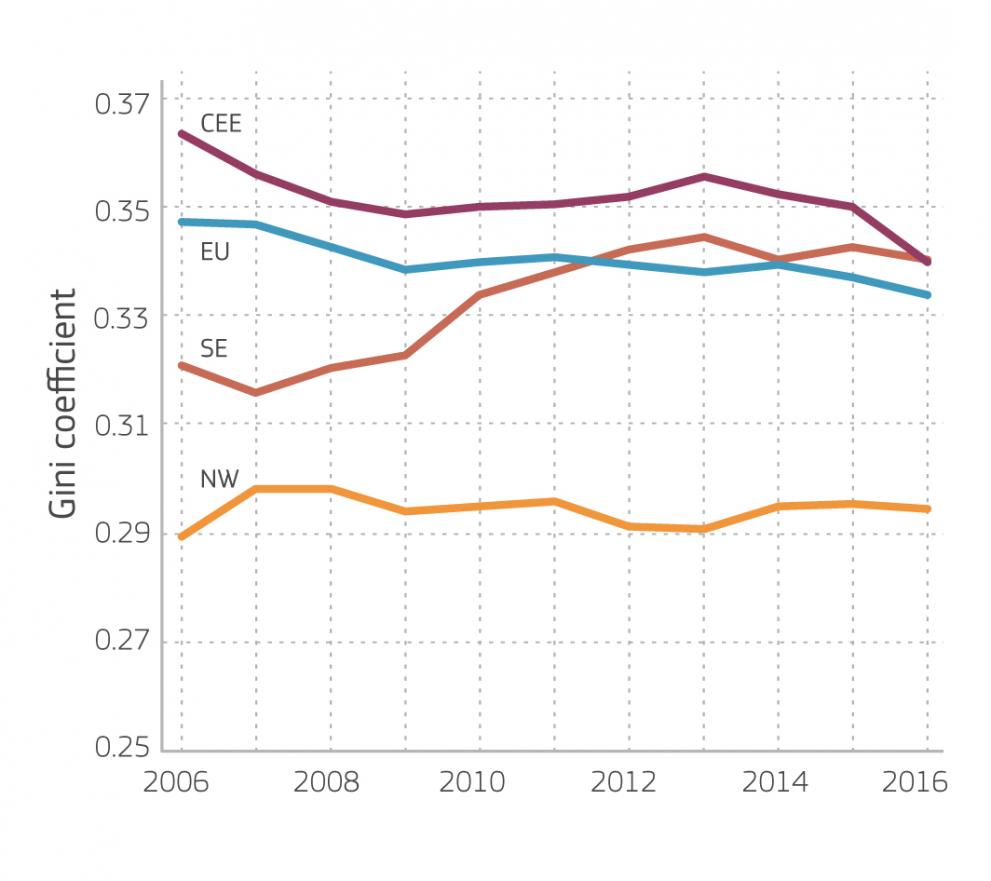A slight decline in EU-wide income inequality masks an increase in Southern Europe.
EU wide income inequality declined over the period 2006-2016.
But inequality in Southern Europe increased significantly from 2007 to 2013.
The rise of income inequality across Southern Europe is mainly due to a growing income gap between median earners and the poor.
In 2016 income inequality in Southern Europe had increased to Central and Eastern European levels.

Note: The graph shows the evolution of inequality in net household income in the EU and by macro-region, 2006-2016. The ‘Gini coefficient’ is a standard measure of income inequality. The coefficient ranges from 0-1. A country in which every resident has the same income would have a coefficient of 0. A country in which one resident earned all the income while everyone else earned nothing, would have an coefficient of 1. NW stands for North-Western EU (Austria, Belgium, Denmark, Finland, France, Germany, Ireland, Luxembourg, the Netherlands, Sweden and the UK). SW stands for Southern EU (Cyprus, Greece, Italy, Malta, Portugal and Spain) and CEE for Central and Eastern EU (Bulgaria, Czechia, Estonia, Hungary, Latvia, Lithuania, Poland, Romania, Slovakia and Slovenia). The unit of observation is the household with at least one person aged 25-60 years old; equivalised household incomes (OECD scale), in PPS at 2015 prices. Source: JRC fairness report (2020)
Download the report
Beyond averages - fairness in an economy that works for people
